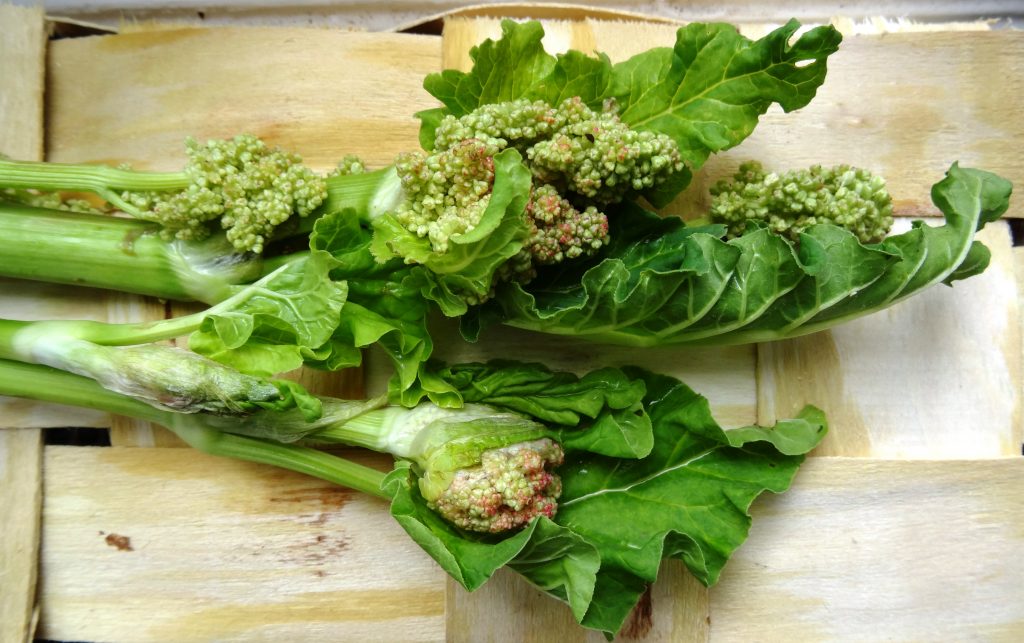Am 8. April um 7:55 bin ich zu Gast auf Ö1
https://oe1.orf.at/programm/20210408#634841/Entdecken-vor-der-Tuer
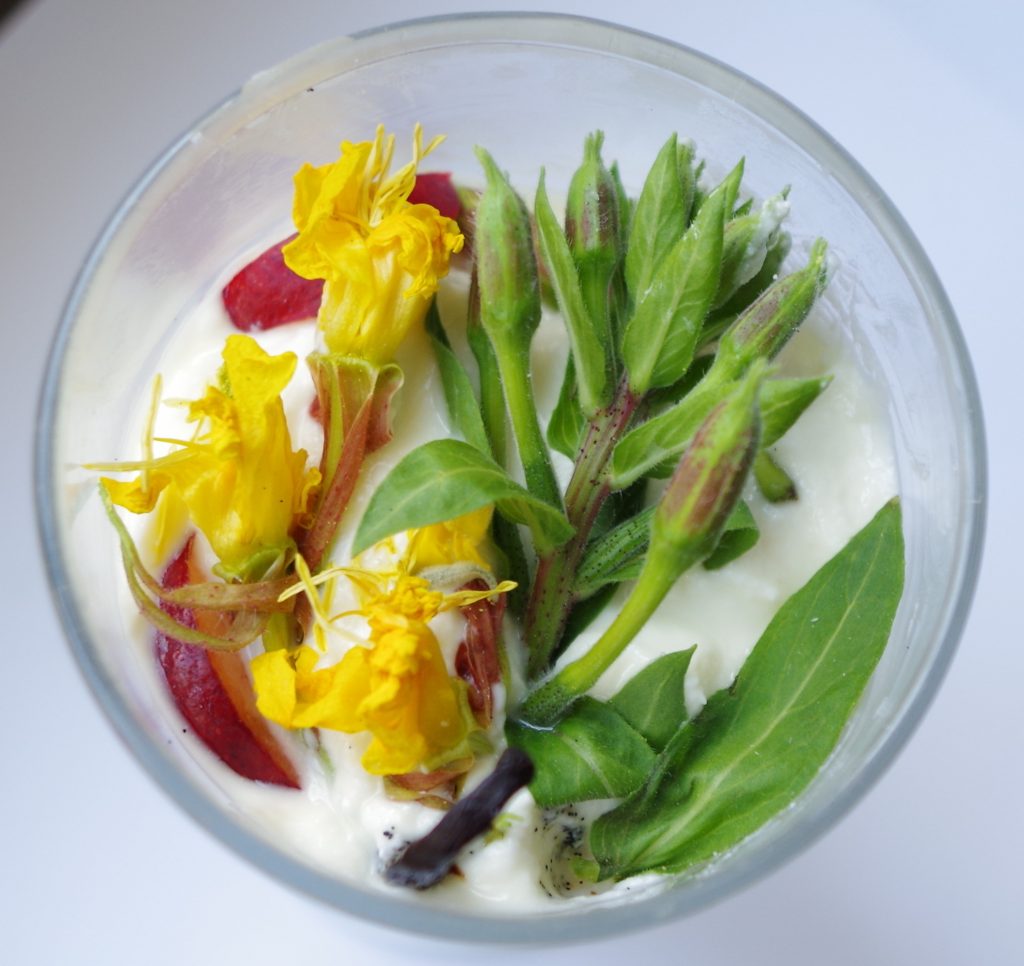
Wildpflanzen sind das denkbar beste Superfood, das noch dazu vor der Tür wächst.

Am 8. April um 7:55 bin ich zu Gast auf Ö1
https://oe1.orf.at/programm/20210408#634841/Entdecken-vor-der-Tuer

Wildpflanzen sind das denkbar beste Superfood, das noch dazu vor der Tür wächst.
Am 2. April um 15:30
bin ich zu Gast im Programm Ö1
https://oe1.orf.at/programm/20210402#634572/Wildes-Gruen
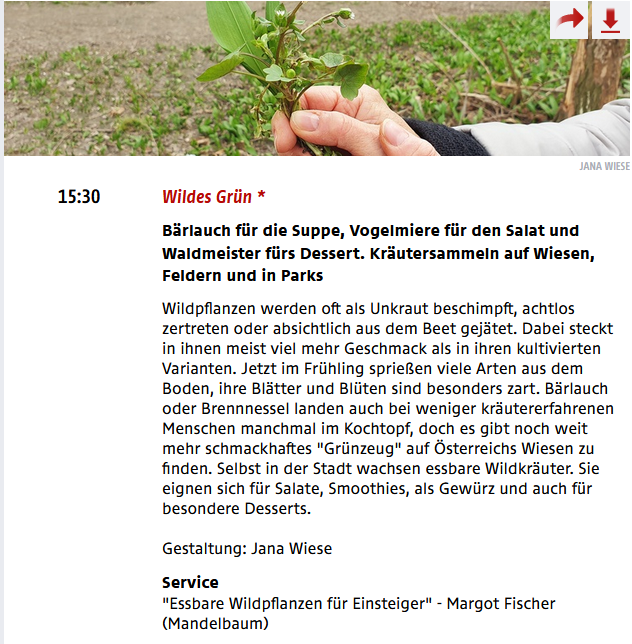

Frisch aus der Druckerpresse erfreut das Büchlein mit zahlreichen wissenswerten Informationen und köstlichen Rezepten auch als Gastgeschenk.
Aroma seit mehr als 60 Millionen Jahren
Thymian existiert seit dem Paläozän. Er half beim Einbalsamieren von Pharaonen, schuf eine Verbindung zu den Göttern, verschaffte römischen Legionären Mut, schützte Ärzte und Diebe vor der Pest, diente noch im Zweiten Weltkrieg als lebensrettendes Antibiotikum, tröstet seit Jahrtausenden MelancholikerInnen und erfreut mindestens ebenso lange schon Gourmets und »Gourmettes« mit seinem köstlichen und vielschichtigen Aroma.
Eine Auswahl weiterführender Literatur
Handwörterbuch des deutschen Aberglaubens. Unveränd. photomechan. Nachdr. der Ausg. Berlin und Leipzig, de Gruyter, Guttentag, Reimer, Trübner, Veit, 1941, 3., unveränd. Aufl. (Handwörterbücher zur deutschen Volkskunde : Abt. 1, Aberglaube).
Mahmoud, et al. (Hg.) 2012 – Salmonella.
Biene und Bienenstaat als Metapher (2019). In: Rainer Stripf (Hg.): Honig für das Volk: Verlag Ferdinand Schöningh, S. 107–118.
Thymus Working Title: IntechOpen.
Adlard, John (1976): Blake and the Wild Thyme. In: Folklore 87 (219).
Ahari, K M; Salamatdoustnobar, R; Maheri-Sis, N; Gorbani, A; Shabestari, A H; Hoshadi, A et al. (2011): Effects of the thyme extract on the ruminal methane production. In: Pakistan Journal of Nutrition 10 (12), S. 1146–1148.
Ambrose, Dawn C. P.; Manickavasagan, A.; Naik, Ravindra: Leafy medicinal herbs. Botany, chemistry, postharvest technology and uses.
Apicius: De re coquinaria. Über die Kochkunst. Hg. v. Robert Maier (Reclams Universal-Bibliothek, Nr. 19551).
Baker, Brian P; Grant, Jennifer A (2018): Thyme and Thyme Oil Profile. Active Ingredient Eligible for Minimum Risk Pesticide Use. New York State Integrated Pest Management, Cornell University, Geneva NY.
Banjaw, Dejene Tadesse (2017): Review on Effect of Essential Oil on Vase Life of Cut Flowers. In: Journal of Biology, Agriculture and Healthcare 7 (11), S. 25–28.
Basch, Ethan; Ulbricht, Catherine; Hammerness, Paul; Bevins, Anja; Sollars, David (2004): Thyme (Thymus vulgaris L.), Thymol. In: J. Of Herbal Pharmacotherapy 4 (1), S. 49–67. DOI: 10.1300/J157v04n01_07.
Basch, Ethan; Ulbricht, Catherine; Hammerness, Paul; Bevins, Anja; Sollars, David (2009): Thyme (Thymus vulgaris L.), Thymol. In: J. Of Herbal Pharmacotherapy 4 (1), S. 49–67. DOI: 10.1080/J157v04n01_07.
Belén Sabater-Jara, Ana; Pina Funes, María; Angeles Pedreño, María; Belchí-Navarro, Sarai (2019): Essential Oils of Thymbra capitata and Thymus hyemalis and Their Uses Based on Their Bioactivity. In: Thymus [Working Title]: IntechOpen.
Botsoglou, Nickos A.; Yannakopoulos, Athanassios L.; Fletouris, Dimitrios J.; Tserveni-Goussi, Angela S.; Fortomaris, Paschalis D. (1997): Effect of Dietary Thyme on the Oxidative Stability of Egg Yolk. In: J. Agric. Food Chem. 45 (10), S. 3711–3716. DOI: 10.1021/jf9703009.
Bozkurt, Emir; Atmaca, Harika; Kisim, Asli; Uzunoglu, Selim; Uslu, Ruchan; Karaca, Burcak (2012): Effects of Thymus serpyllum extract on cell proliferation, apoptosis and epigenetic events in human breast cancer cells. In: Nutrition and cancer 64 (8), S. 1245–1250. DOI: 10.1080/01635581.2012.719658.
Busch, Kerstin (2019): Der vielseitige Einsatz von Thymian in der allgemein-internistischen Praxis. Universität, Basel. Klinische Pharmakologie.
Charles, Denys J. (2013): Antioxidant properties of spices, herbs and other sources. New York, NY: Springer.
Classen, Constance; Howes, David; Synnott, Anthony (2010): Aroma. The cultural history of smell. London, New York: Routledge.
Columella, Lucius Junius Moderatus (1745): Of Husbandry. In Twelve Books and His Book Concerning Trees: A. Millar.
Dauqan, Eqbal M A; Abdullah, Aminah (2017): Medicinal and Functional Values of Thyme (Thymus vulgaris L.) Herb. In: J App Biol Biotech. DOI: 10.7324/JABB.2017.50203.
Detienne, Marcel (1994): The gardens of Adonis. Spices in Greek mythology. Princeton, N.J.: Princeton University Press (Mythos : the Princeton/Bollingen series in world mythology).
Dorson, Richard Mercer (1993): American folklore. [13. Dr.]. Chicago, Ill.: Univ. of Chicago Press (The Chicago history of American civilization).
El-Awady, Sara I; Essam, Tamer; Hashem, Abdelgwad; Boseila, Abeer A H; Mohmmed, Aly F (2014): Assessment of Antiviral Activity for Lamiaceae Family Members Against Rna and Dna Virus Models Using Cell -Culture: in Vitro Study. In: World Journal of Medical Sciences 11 (1), S. 111–119.
Gagliano Candela, Rossella; Maggi, Filippo; Lazzara, Giuseppe; Rosselli, Sergio; Bruno, Maurizio (2019): The Essential Oil of Thymbra capitata and its Application as A Biocide on Stone and Derived Surfaces. In: Plants (Basel, Switzerland) 8 (9). DOI: 10.3390/plants8090300.
Grieve, Maud (1971): Modern herbal: Dover Pub.
Jackson, S. A. L.; Hay, R. K. M. (2015): Characteristics of varieties of thyme (Thymus vulgaris L.) for use in the UK: Oil content, composition and related characters. In: Journal of Horticultural Science 69 (2), S. 275–281. DOI: 10.1080/14620316.1994.11516455.
Jensen, Catrine Grønberg; Ehlers, Bodil Kirstine (2010): Genetic variation for sensitivity to a thyme monoterpene in associated plant species. In: Oecologia 162 (4), S. 1017–1025. DOI: 10.1007/s00442-009-1501-z.
Joyce, Sarah (1997): A Study of William Blake´s MILTON a Poem. Dissertation, London. University College.
Kauvar, Elaine (1976): Los´s Messenger to Eden: Blake´s Wild Thyme. In: Blake 10 (3), S. 82–84.
Kazemi, Mohsen (2015): Phytochemical Composition of Thymus vulgaris L. Essential Oil. In: Journal of Essential Oil Bearing Plants 18 (3), S. 751–753. DOI: 10.1080/0972060X.2014.985733.
Khattab, M S A; Kholif, A. E.; Abd El Tawab, A M; Shaaban, M. M.; Hadhoud, F. I.; El-Fouly, H. A.; Olafadehan, O. A. (2020): Effect of replacement of antibiotics with thyme and celery seed mixture on the feed intake and digestion, ruminal fermentation, blood chemistry, and milk lactation of lactating Barki ewes. In: Food & function 11 (8), S. 6889–6898. DOI: 10.1039/d0fo00807a.
Kim, Yon-Suk; Lee, Seung-Jae; Hwang, Jin-Woo; Kim, Eun-Kyung; Kim, Seong-Eun; Kim, Ee-Hwa et al. (2012): In vitro protective effects of Thymus quinquecostatus Celak extracts on t-BHP-induced cell damage through antioxidant activity. In: Food and chemical toxicology : an international journal published for the British Industrial Biological Research Association 50 (11), S. 4191–4198. DOI: 10.1016/j.fct.2012.08.015.
Köksal, Ekrem; Bursal, Ercan; Gülçin, İlhami; Korkmaz, Mustafa; Çağlayan, Cüneyit; Gören, Ahmet C.; Alwasel, Saleh H. (2016): Antioxidant activity and polyphenol content of Turkish thyme (Thymus vulgaris ) monitored by liquid chromatography and tandem mass spectrometry. In: International Journal of Food Properties 20 (3), S. 514–525. DOI: 10.1080/10942912.2016.1168438.
Kulisić, Tea; Krisko, Anita; Dragović-Uzelac, Verica; Milos, Mladen; Pifat, Greta (2007): The effects of essential oils and aqueous tea infusions of oregano (Origanum vulgare L. spp. hirtum), thyme (Thymus vulgaris L.) and wild thyme (Thymus serpyllum L.) on the copper-induced oxidation of human low-density lipoproteins. In: International journal of food sciences and nutrition 58 (2), S. 87–93. DOI: 10.1080/09637480601108307.
Lenihan, J. M. A.: The crumbs of creation. Trace elements in history, medicine, industry, crime and folklore.
Lorenzo, Jose M.; Mousavi Khaneghah, Amin; Gavahian, Mohsen; Marszałek, Krystian; Eş, Ismail; Munekata, Paulo E S et al. (2019): Understanding the potential benefits of thyme and its derived products for food industry and consumer health: From extraction of value-added compounds to the evaluation of bioaccessibility, bioavailability, anti-inflammatory, and antimicrobial activities. In: Critical reviews in food science and nutrition 59 (18), S. 2879–2895. DOI: 10.1080/10408398.2018.1477730.
Mahmoud, Barakat S M (Hg.) (2012): Salmonella. A Dangerous Foodborne Pathogen: INTECH Open Access Publisher.
Mannan, Abdul; Inayatullah, Samia; Akhtar, M. Zaeem; Qayyum, Mazhar; Mirza, Bushra (2009): Biological evaluation of wild thyme (Thymus serpyllum ). In: Pharmaceutical Biology 47 (7), S. 628–633. DOI: 10.1080/13880200902915622.
Mayer-Nicolai, Christine (2008): Vergleich der durch die historischen Autoren Hildegard von Bingen und Leonhart Fuchs pflanzlichen Arzneimitteln zugeschriebenen mit aktuell anerkannten Indikationen. Dissertation. Julius-Maximilians-Universität, Würzburg. Fakultät für Chemie und Pharmazie.
Noh, Yoo-Hun; Cheon, Seungui; Kim, In Hye; Lee, Seungah; Yin, XingFu; Jeong, JaeHun et al. (2019): The effects of MS-10 dietary supplement, mixture of Korean thistle and thyme extracts, on bone health, and symptoms in menopausal women. In: Journal of Functional Foods 52, S. 680–689. DOI: 10.1016/j.jff.2018.11.047.
Ocaña, A.; Reglero, G. (2012): Effects of Thyme Extract Oils (from Thymus vulgaris, Thymus zygis, and Thymus hyemalis) on Cytokine Production and Gene Expression of oxLDL-Stimulated THP-1-Macrophages. In: Journal of obesity 2012, S. 104706. DOI: 10.1155/2012/104706.
Paaver, Urve; Orav, Anne; Arak, Elmar; Mäeorg, Uno; Raal, Ain (2008): Phytochemical analysis of the essential oil of Thymus serpyllum L. growing wild in Estonia. In: Natural product research 22 (2), S. 108–115. DOI: 10.1080/14786410601035118.
Park, Byeoung-Soo; Choi, Won-Sik; Kim, Jeong-Han; Kim, Kap-Ho; Lee, Sung-Eun (2005): MONOTERPENES FROM THYME (THYMUS VULGARIS) AS POTENTIAL MOSQUITO REPELLENTS. In: Journal of the American Mosquito Control Association 21 (1), S. 80–83. DOI: 10.2987/8756-971X(2005)21[80:MFTTVA]2.0.CO;2.
Pirpour, S; Behroznam, B; Zakerin, A; Aboutalebi, A (2013): Study on the lifespan and quality of cut Lilium santander through the use of thyme and peppermint essential oil. In: Annals of Biological Research 4 (6), S. 124–128.
Ransome, Hilda M. (2004): The sacred bee in ancient times and folklore. Mineola, N.Y.: Dover Publications.
Rich, Vivian (2009], ©1998): Cursing the basil and other folklore of the garden. Victoria, B.C.: Horsdal & Schubart.
Riley, Gillian (2014): Food in Art. London: Reaktion Books.
Romane, Abderrahmane; Harrak, Rajae; Bahri, Fuad (2012): Use Thyme Essential Oils for the Prevention of Salmonellosis. In: Barakat S M Mahmoud (Hg.): Salmonella. A Dangerous Foodborne Pathogen: INTECH Open Access Publisher, S. 305–322.
Rutter, John (1994): The sprig of thyme. A cycle of folk-song settings for mixed choir with chamber ensemble (or chamber orchestra). Oxford, New York: Oxford University Press.
Saki, A A; Kalantar, M; Khoramabadi, V (2014): Effects of Drinking Thyme Essence (Thymus vulgaris L.) on Growth Performance, Immune Response and Intestinal Selected Bacterial Population in Broiler Chickens. In: Poultry Science 2 (2), S. 113–123.
Sakkas, Hercules; Papadopoulou, Chrissanthy (2017): Antimicrobial Activity of Basil, Oregano, and Thyme Essential Oils. In: Journal of microbiology and biotechnology 27 (3), S. 429–438. DOI: 10.4014/jmb.1608.08024.
Salehi, Bahare; Mishra, Abhay Prakash; Shukla, Ila; Sharifi-Rad, Mehdi; Contreras, María Del Mar; Segura-Carretero, Antonio et al. (2018): Thymol, thyme, and other plant sources: Health and potential uses. In: Phytotherapy research : PTR 32 (9), S. 1688–1706. DOI: 10.1002/ptr.6109.
Santoyo, S.; Jaime, L.; García-Risco, M. R.; Lopez-Hazas, M.; Reglero, G. (2014): Supercritical fluid extraction as an alternative process to obtain antiviral agents from thyme species. In: Industrial Crops and Products 52, S. 475–480. DOI: 10.1016/j.indcrop.2013.10.028.
Sarić-Kundalić, Broza; Dobeš, Christoph; Klatte-Asselmeyer, Valerie; Saukel, Johannes (2011): Ethnobotanical survey of traditionally used plants in human therapy of east, north and north-east Bosnia and Herzegovina. In: Journal of ethnopharmacology 133 (3), S. 1051–1076. DOI: 10.1016/j.jep.2010.11.033.
Sax, Jeri A (1999): Herbal Empowerment. A Thyme for Tranquility. Wisconsin Dells.
Sefidkon, F.; Dabiri, M.; Mirmostafa, S. A. (2004): The Composition of Thymus serpyllum L. Oil. In: Journal of Essential Oil Research 16 (3), S. 184–185. DOI: 10.1080/10412905.2004.9698691.
Shati, Ali A.; Elsaid, Fahmy G. (2009): Effects of water extracts of thyme (Thymus vulgaris) and ginger (Zingiber officinale Roscoe) on alcohol abuse. In: Food and chemical toxicology : an international journal published for the British Industrial Biological Research Association 47 (8), S. 1945–1949. DOI: 10.1016/j.fct.2009.05.007.
Singletary, Keith (2016): Thyme. In: Nutrition Today 51 (1), S. 40–49. DOI: 10.1097/NT.0000000000000139.
Sneader, Walter (2004): Drug discovery. Past, present and future. Rev. and updated ed. Hoboken, N.J.: Wiley.
Soković, M.; Glamoclija, J.; Cirić, A.; Kataranovski, D.; Marin, P. D.; Vukojević, J.; Brkić, D. (2008): Antifungal activity of the essential oil of Thymus vulgaris L. and thymol on experimentally induced dermatomycoses. In: Drug development and industrial pharmacy 34 (12), S. 1388–1393. DOI: 10.1080/03639040802130053.
Stahl-Biskup, Elisabeth (1991): The Chemical Composition of Thymus Oils: A Review of the Literature 1960–1989. In: Journal of Essential Oil Research 3 (2), S. 61–82. DOI: 10.1080/10412905.1991.9697915.
Stahl-Biskup, Elisabeth (2012): Thyme. In: Elisabeth Stahl-Biskup und R P Venskutonis (Hg.): Handbook of Herbs and Spices: Woodhead Publishing, S. 499–525.
Stahl-Biskup, Elisabeth; Sáez, Francisco (2019): Thyme. The genus thymus. [S.l.]: CRC PRESS.
Stahl-Biskup, Elisabeth; Venskutonis, R P (Hg.) (2012): Handbook of Herbs and Spices: Woodhead Publishing.
Stripf, Rainer (Hg.) (2019): Honig für das Volk: Verlag Ferdinand Schöningh.
Talazadeh, Forough; Mayahi, Mansoor (2017): Immune response of broiler chickens supplemented with pediatric cough syrup including thyme extract in drinking water against influenza vaccine. In: Journal of Herbmed Pharmacology 6.
Tongue, R. L. (1967): Folk-Song and Folklore. In: Folklore 78 (4), S. 293–303. DOI: 10.1080/0015587X.1967.9717107.
Vázquez-Sánchez, Daniel; Galvão, Juliana Antunes; Mazine, Marina Rodrigues; Gloria, Eduardo Micotti; Oetterer, Marília (2018): Control of Staphylococcus aureus biofilms by the application of single and combined treatments based in plant essential oils. In: International journal of food microbiology 286, S. 128–138. DOI: 10.1016/j.ijfoodmicro.2018.08.007.
Zubaida, Sami; Bishara, Richard (2001/2002): A Taste of Thyme. Culinary Cultures of the Middle East. In: The Arab Studies Journal 9/10 (2/1), S. 114–117.
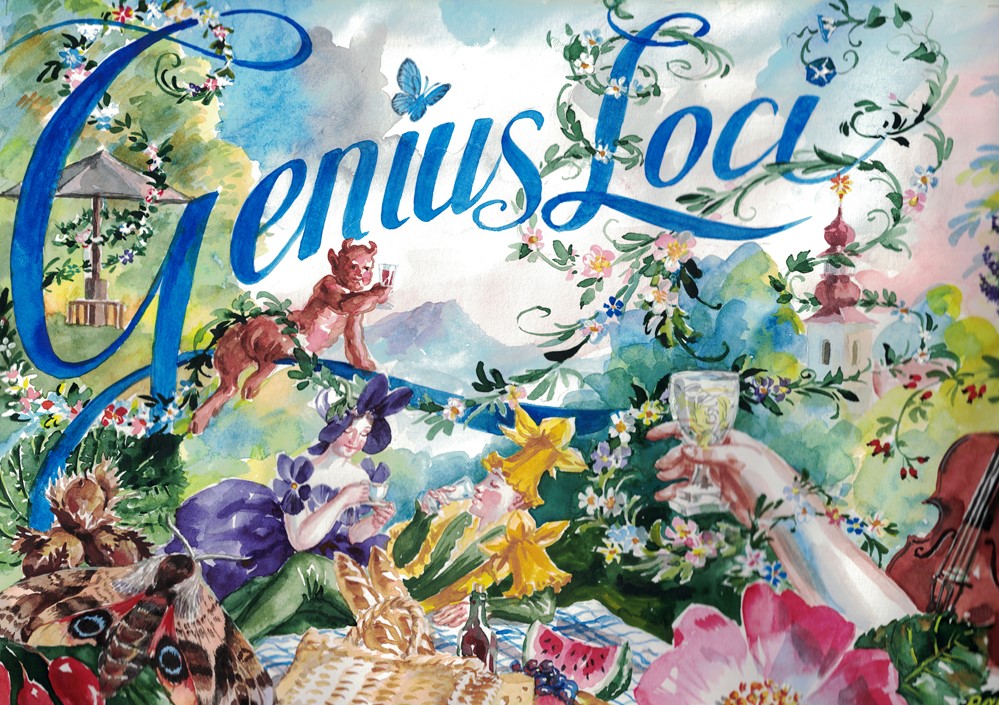
Genius Loci
Unterm Mittagskogel im Milchsternwald im Schloss Damtschach
Laden wir zu Speis und Trank und Lustwandeln und Konzert
Danke, lieber Matthias (Heckmann) für die folgenden Bilder!
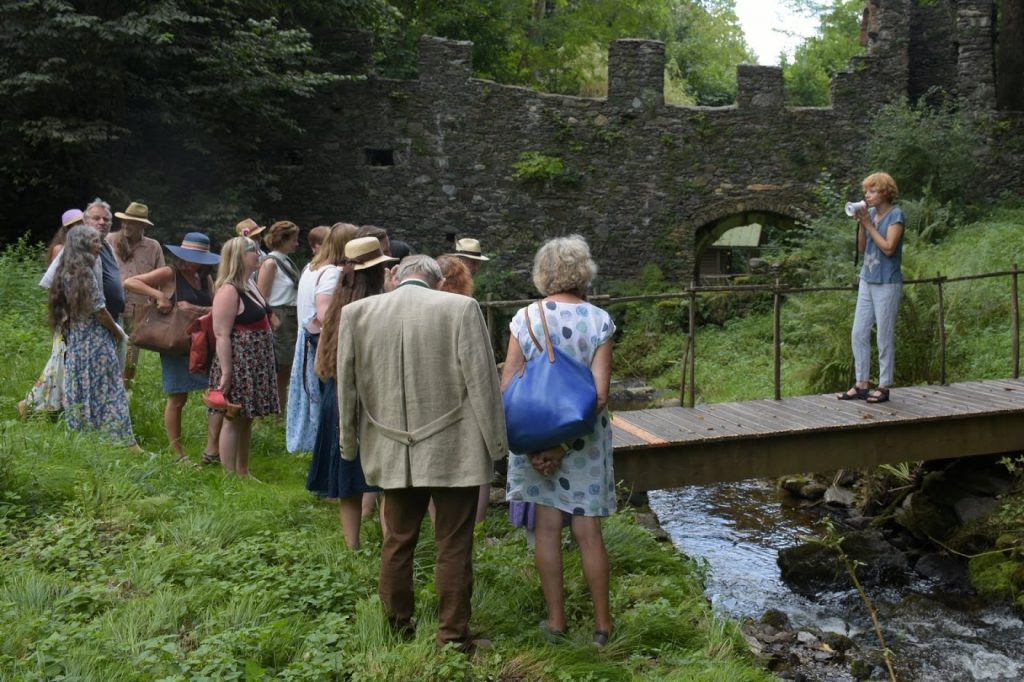
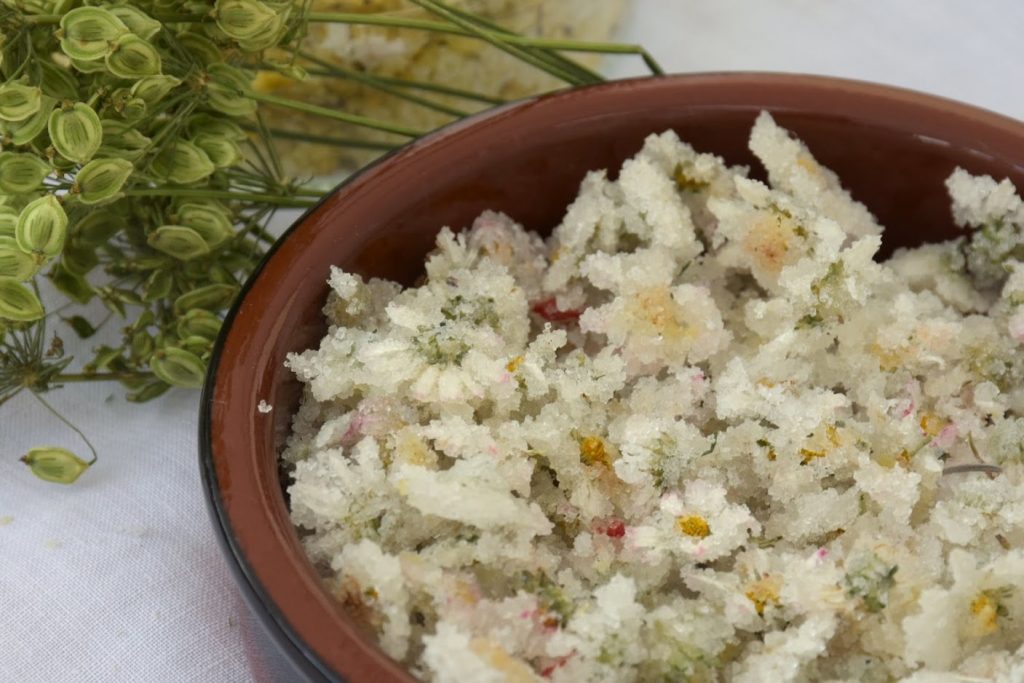
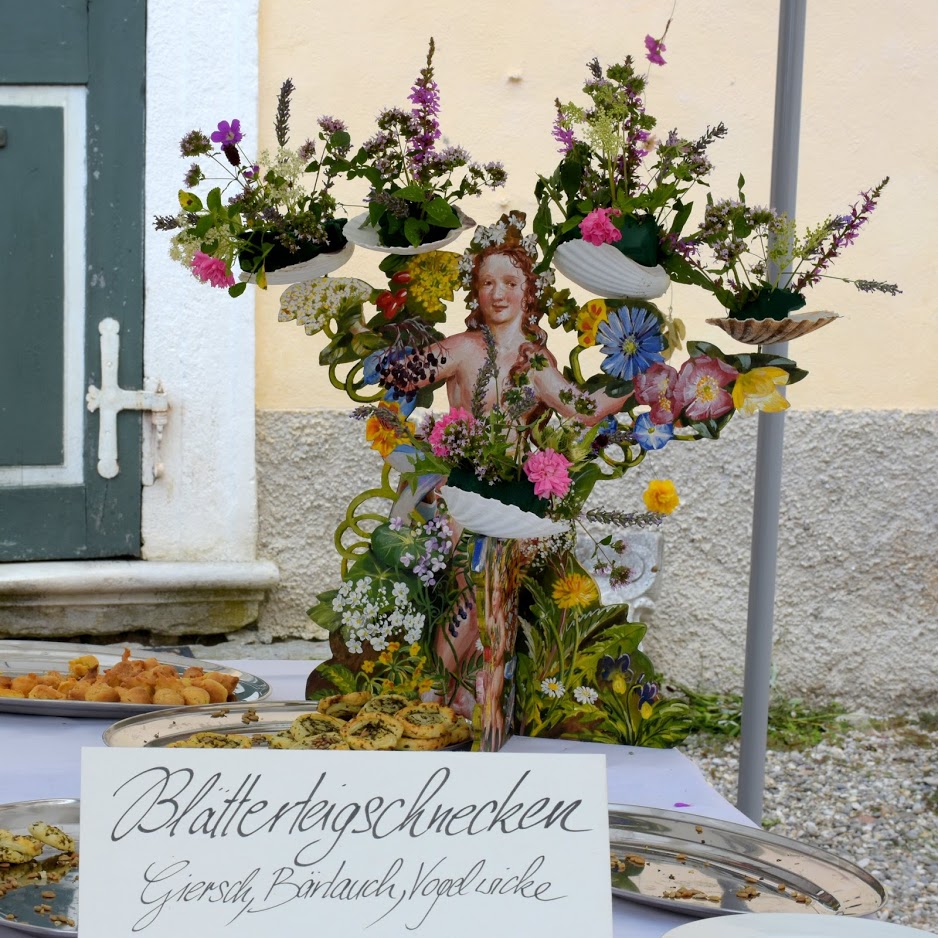
Würden Sie in einem Wiener Park oder am Stadtrand Früchte, Blüten oder Kräuter zum Naschen oder für Speisen und Getränke sammeln? Aus welchen Gründen nicht, wann vielleicht doch, und wenn, dann wie?
Das BOKU-Forschungsprojekt Urban Wild Foods ist an Ihren Antworten auf diese Fragen interessiert um erstmals Ausmaß und Nachhaltigkeit des Sammelns von Wildpflanzen in Wien abzubilden. Bitte nehmen Sie an der Befragung teil und senden Sie den Link der Befragung an 2-3 Freunde und Freundinnen oder Bekannte weiter:
https://urbanwildfoods.limequery.com/726297
Einzige Bedingung ist, dass Sie bzw. Ihre Freunde, Freundinnen und Bekannte in Wien oder in Wien-Umgebung wohnen oder arbeiten oder einen anderen engen Bezug zu Wien haben. Es ist kein Vorwissen über Wildpflanzen notwendig. Die Befragung ist anonym, die Beantwortung der Fragen dauert in etwa 10-15 Minuten.
Herzlichen Dank für Ihre Unterstützung!
Anjoulie Brandner DIin
wissenschaftliche Projektmitarbeiterin
Institut für
Ökologischer Landbau (IFÖL)
Department für Nachhaltige Agrarsysteme
Universität für Bodenkultur Wien (BOKU)
Gregor-Mendel-Straße
33, A-1180 Wien +43 1 47654-93347
Am 24. Mai 2020 lade ich um 15 Uhr zu einem Spaziergang in den herrlichen Garten des Palais Schönborn und in den angrenzenden Park.
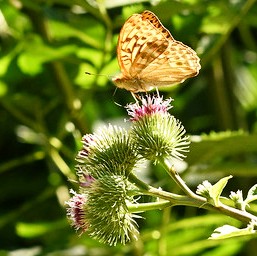
Eine Auswahl meiner Bücher wird zum Schmökern und Erwerben bereitliegen.
Ein Besuch des Volkskundemuseums (davor oder danach) ergänzt das feine Sonntagsprogramm.
Wegen der Pandemiebestimmungen wird nur eine stark begrenzte Teilnehmerzahl möglich sein. Bitte daher um Anmeldung im Volkskundemuseum.
Volkskundemuseum Wien
Laudongasse 15–19, 1080 Wien
T: +43 1 406 89 05
F: +43 1 408 53 42
E: office@volkskundemuseum.at
W: www.volkskundemuseum.at
// Info zum Museumsbetrieb bezüglich des Coronavirus //
Öffnungszeiten
Museum:
Di bis So, 10.00 bis 17.00 Uhr
Do, 10.00 bis 20.00 Uhr
Bibliothek:
Di bis Fr, 9.00 bis 12.00 Uhr
Hildebrandt Café:
Di bis So, 10.00 bis 18.00 Uhr
Do, 10.00 bis 20.00 Uhr
Mostothek:
Di, ab 17.00 Uhr
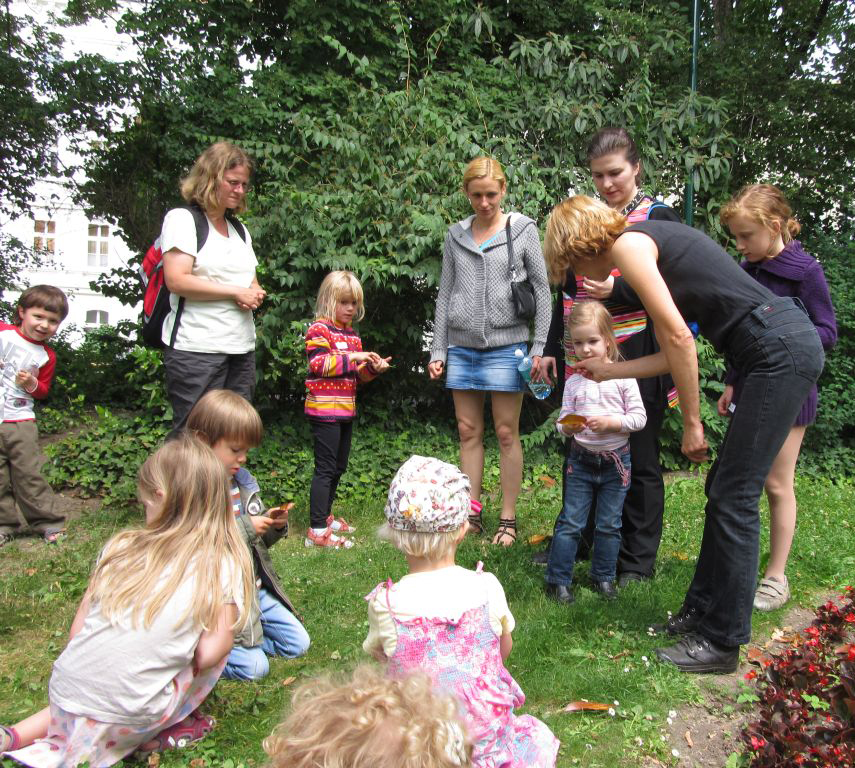
Am 24. Mai 2020 ab 15 Uhr
Auf einem Spaziergang durch den Garten des Museums für Volkskunde und den angrenzenden Schönborn Park suchen und probieren wir köstliche und heilsame Wildpflanzen.
Der Spaziergang dauert etwa eine Stunde und kostet den Museumseintritt plus € 4.-.
Volkskundemuseum Wien – 1080 Wien, Laudongasse 15-19


Plaudern, stöbern, schmökern, entspannen, Geschenke kaufen
Am 22. Dezember bieten Libusa und ich von 11°°–13°° unsere feinen Produkte an. Erlesene Naturkosmetik und Gourmandisen, dazu erstklassiger Lesestoff aus den großartigen Verlagen Mandelbaum und pro verbis.

ADRIA Wien bei der Salztorbrücke
Sonntag, 15. Dezember 2019
11:00 – 16:00
Plaudern – Musik hören – ein gutes Getränk schlürfen – sich selbst und Freunden besondere Geschenke kaufen.
Margot Fischer, die Wildpflanzenaficionada und Autorin von Kochbüchern mit kulturhistorischem und ernährungsphysiologischem Bonus, präsentiert und signiert ihre Bücher.
Libusa Kanov, die Kräuter- und Naturkosmetikspezialistin, bietet ihre feinen Produkte an.
Am Freitag, 26. April 2019 befasst sich die Sendung mit dem Rhabarber.
Mein Gespräch mit der feinen Redakteurin Jana Wiese ist zu hören auf: https://oe1.orf.at/programm/20190426
